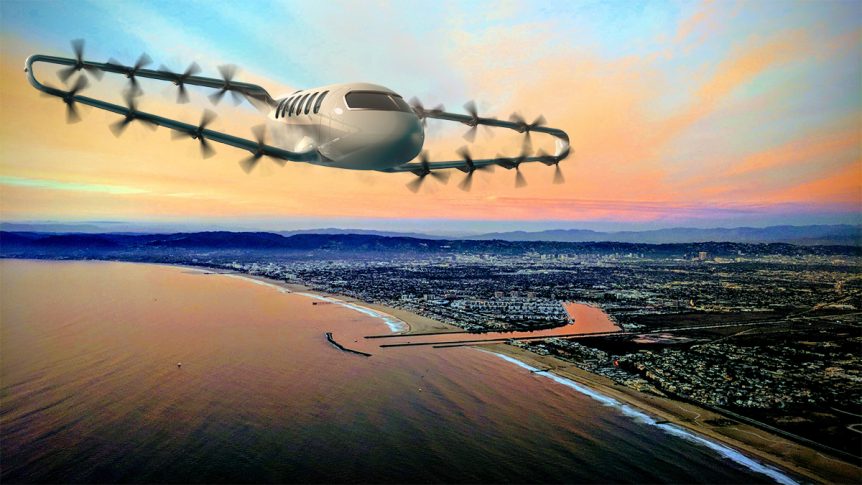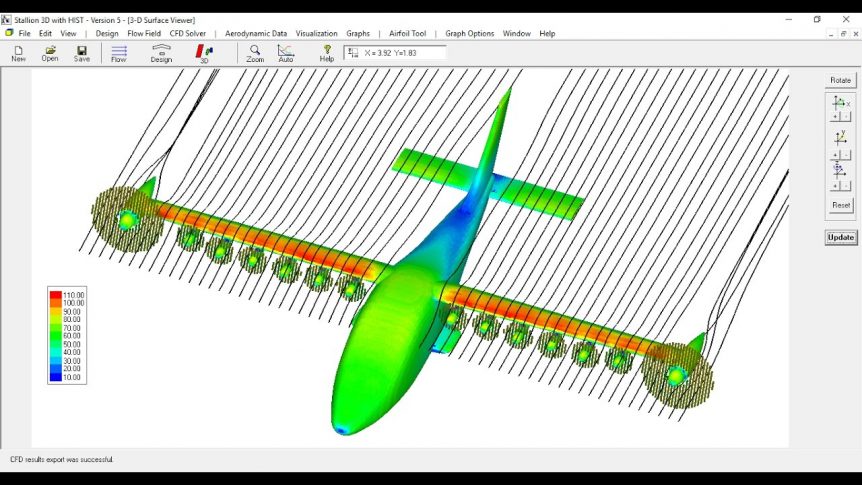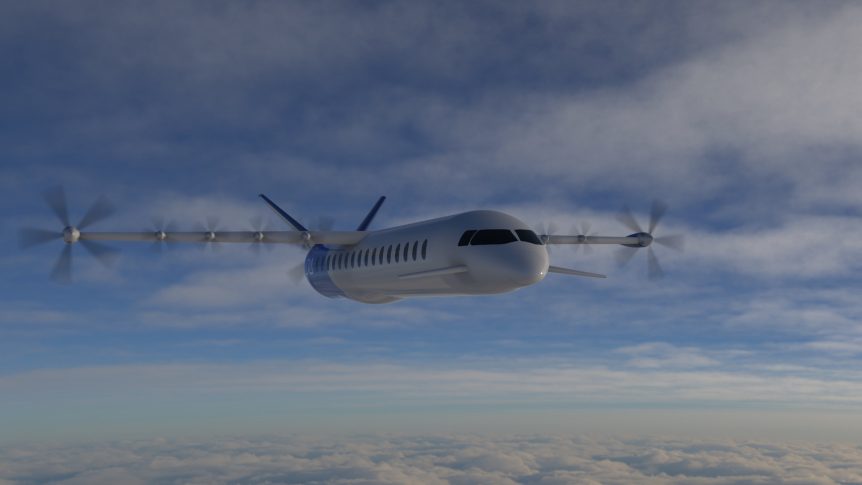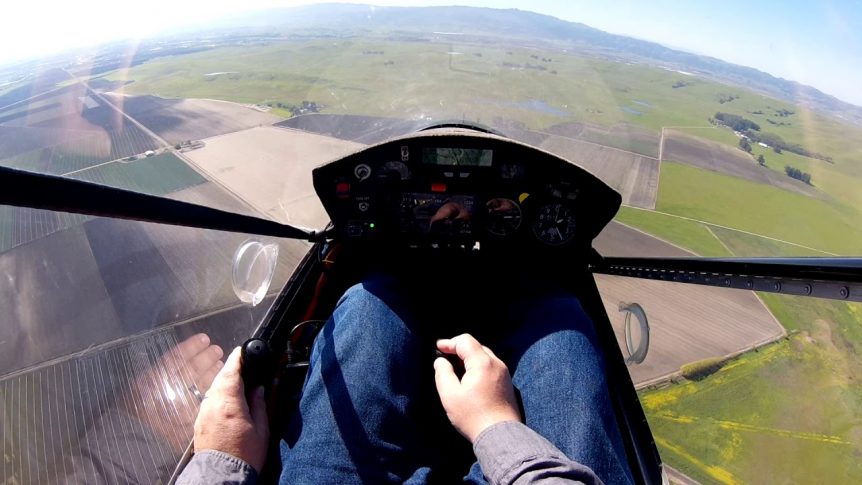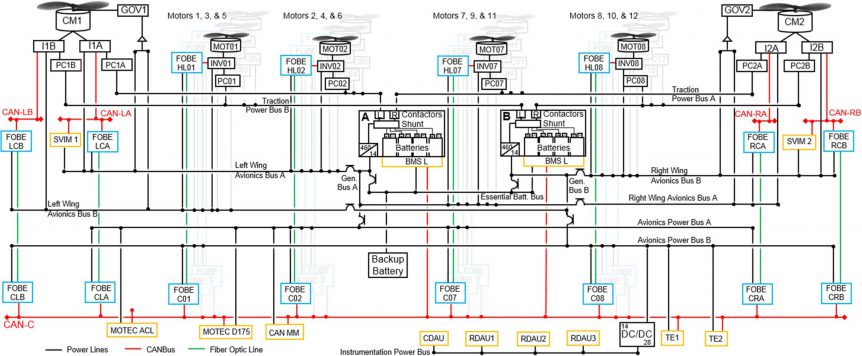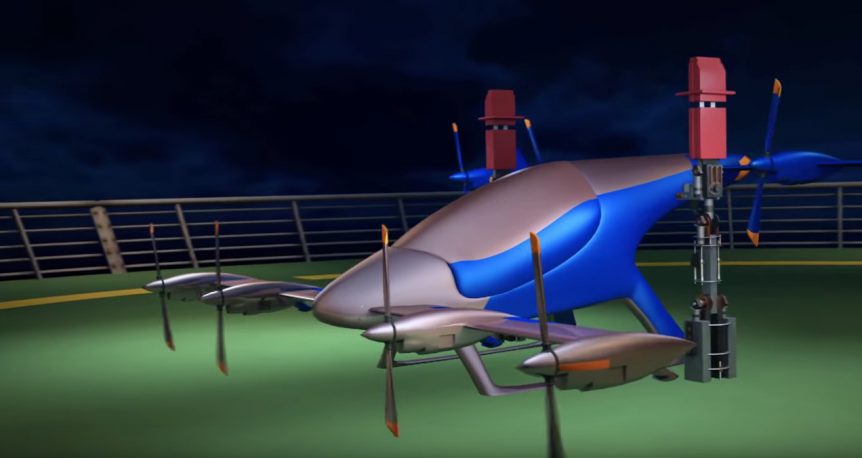Craft Aero, yet another newcomer in the electric Vertical Take Off and Landing (eVTOL) market, brings a novel 16 motor, diamond wing design to regional aviation. Laurie Foti writing for Tech Crunch, thinks, “Air taxis may still be pie in the sky,” but acknowledges Craft Aerospace for aiming to move the air travel industry forward, “with a totally new vertical takeoff and landing aircraft that it believes could make city-to-city hops simpler, faster, cheaper and greener.” She credits Craft for its “new” method of deflecting airflow downward to gain vertical takeoffs, something qualified by company co-founder James Dorris. He notes that, “Our tech is a combination of both existing and novel tech. The box wing has been built and flown; the high flap aircraft has been built and flown. They’ve never been synthesized like this in a VTOL aircraft.” Claiming to cut regional flight times in half, Dorris explains the time savings possible. “Anyone that’s ever had to take a …
Aquifer: Flow Batteries and Rim-driven Motors
In a highly unusual approach, two NASA researchers have combined a flow battery system with a rim-driven propeller drive system. Presenting at the Sustainable Aviation Symposium 2019 at UC Berkeley,Robert McSwain and Jason Lechniak detailed their AQUIFER Project, currently underway in the NASA Armstrong Flight Research Center at Edwards Air Force Base. On Day Two of the Symposium, Jason headed the presentation with a discussion of the implications of this and McSwain’s work on overall energy economy and NASA eVTOL discoveries. Robert followed with a technical description of the Nano Electrofuel (NEF) Aqueous Flow Battery and Rim-driven Motor (RDM). “AQUIFER establishes technical feasibility of an early-stage technology, a high-energy density, aqueous-based, flow battery, resulting in a near-term increase of 1.7 times range over an all-electric battery, while retiring fire and explosion hazards associated with lithium-based chemistries. The… flow battery will be integrated with a rim-driven motor (RDM) as a multi-functional design to eliminate conductive EMI and weight from long cable …
Dante AeroNautical Distributes Power
In a dramatic rendering, Dante AeroNautical shows its DAX-19, a regional airliner that will distribute power along its wings, much like NASA’s X-57 Maxwell. Dante describes the craft as representing, “The regional electric air travel of the future.” (In Dante’s web site, the triangle in place of the conventional “a” is the alchemical symbol for fire, or a clever marketing type’s attempt to draw our attention.) Helmut Penner, writing in Cockpit magazine, gives us the following: “Typically, small airlines make their aircraft purchases from major manufacturers, including the still-young Spanish low-cost airline Voltea, which operates 14 A319s and 17 Boeing 717s. But now [the company] is aiming for an ambitious project with the Dante AeroNautical, which is also based in Spain. Already in the middle of the next decade, a hybrid aircraft for 19 passengers to be developed will be used for short-haul flights.” A Small Airline Checks In Voltea “will work actively with Dante Aeronautical to develop this hybrid-electric …
SAS 2019 – Gabriel DeVault’s Clean Commute and Electric Adventures
An electric ultralight developer brought some hopeful notes to the Sustainable Aviation Symposium audience at the University of California Berkeley. Gabriel DeVault is the powertrain development specialist for ZeroAvia, bringing hydrogen power to regional air commuting. He does a lot of commuting in his own electric aircraft, showing that one doesn’t need huge investments in aircraft and infrastructure to enjoy green flight. The Paul MacCready Honorary Lecture: Doing More with Less, Right Now! An Aerospace Engineer and EV systems architect, Gabriel was a founding member of Zero Motorcycles, running R&D for the world’s largest and most successful electric motorcycle company. He now works for ZeroAvia, a firm in Hollister, California working with a hydrogen-powered electric Piper Malibu as the first step toward developing clean aerial commuters. He has worked for JOBY Aviation and designed the HEIST (Hybrid-Electric Integrated Systems Testbed), a Peterbuilt semi pulling a rolling wind tunnel with the high-mounted X-57 Maxwell wing and power system helping pull things …
Simulations May Stimulate Better Hybrids
Phillip Ansell, assistant professor in the Department of Aerospace Engineering in the College of Engineering at the University of Illinois explains the benefits and downsides of fossil fuels. “Jet fuel and aviation gasoline are easy to store on an airplane. They are compact and lightweight when compared to the amount of energy they provide. Unfortunately, the actual combustion process is very inefficient. We’re harnessing only a small fraction of that energy but we currently don’t have electrical storage systems that can compete with that.” Ansell and colleagues are striving to use simulations to increase the range of hybrid aircraft. Batteries provide their own set of problems. He explains that adding more batteries to go farther may have a certain logic, for example, but increases weight – a big detriment. “That’s one of the big barriers we run into when designing battery-powered electrified aircraft. The current technology has very significant range disadvantages. But strong fuel-burn advantages.” eVTOL News recently noted that over …
NASA Freely Shares X57 Lessons
NASA and several partner firms have been working on the X-57 Maxwell electric propulsion demonstrator for the past several years. It hasn’t been as easy as it looked at first. Encouragingly, NASA is sharing some of the hard lessons it has learned in the process, much like Elon Musk sharing many of his patents with the world. One of the hardest lessons involved the multiple battery packs, originally planned to be off-the-shelf units. A December 2016 test resulted in a thermal runaway, a situation in which one cell that overheats can self-destruct and cause adjacent cells to follow suit. This, as we’ve seen in Dreamliner incidents, can be dangerous and potentially deadly. Such fires are exceedingly well reported, with any Tesla incident overwhelming the press, which ignores the 174,000 car fires reported by the National Fire Protection Association in 2015, which resulted in 415 deaths and $1.2 billion in property damage. Electrified aviation will be even more critically examined if electric …
Zunum Designs Electric Power Trains with a Software Approach
Zunum is a startup electric airliner firm, helmed by former leaders in aerospace, electronics and software companies. It’s no surprise, then, to see their design and manufacturing efforts following a path that blends those disciplines. Aviation Week reports Zunum just received an $800,000 matching grant from Washington State’s Clean Energy Fund, “its size proportionate to funding already raised from Boeing HorizonX and JetBlue Technology Ventures.” It’s also the second largest of five such awards. Zunum CEO Ashish Kumar describes the grant as, “a significant amount, a significant endorsement and a significant investment at a national level in electric aviation” that “supplements funds from out-of-state sources and will go toward prototype building.” Zunum presses forward on an aggressive schedule, with plans to certify its 10-to-19-seat hybrid electric regional airliners “in the early 2020s.” Founder and Chief Aero Engineer Matt Knapp describes the organization as “mostly a propulsion company with some aircraft development on the side.” Zunum will develop its power system through a series …
NASA’s Mark Moore Joins Uber
You must really be somebody when Fortune Magazine notices you’re taking a new job. Mark Moore is indeed somebody, and remarkably self-confident in leaving a 30-year NASA career to sign on to a startup – even if it is run by Uber. He will be Director of Aviation for the on-demand ride company, tackling the problems inherent in taking such services into the third dimension. His decade-long work in electric propulsion for aircraft has led him to conceive of some interesting possibilities for Personal Air Vehicles, a term he engaged early. His Puffin vertical takeoff and landing vehicle, for instance, seemed to use elements of Lockheed’s XFV-1 Pogo and Aerovironment’s Sky Tote – both tail sitters. Ben Rich’s book, Skunk Works, details the problems pilots “faced” while trying to land the Pogo on its tail lying on their backs and looking straight up. Moore’s design allowed the pilot to take off and land while standing upright, and then transitioning to …

